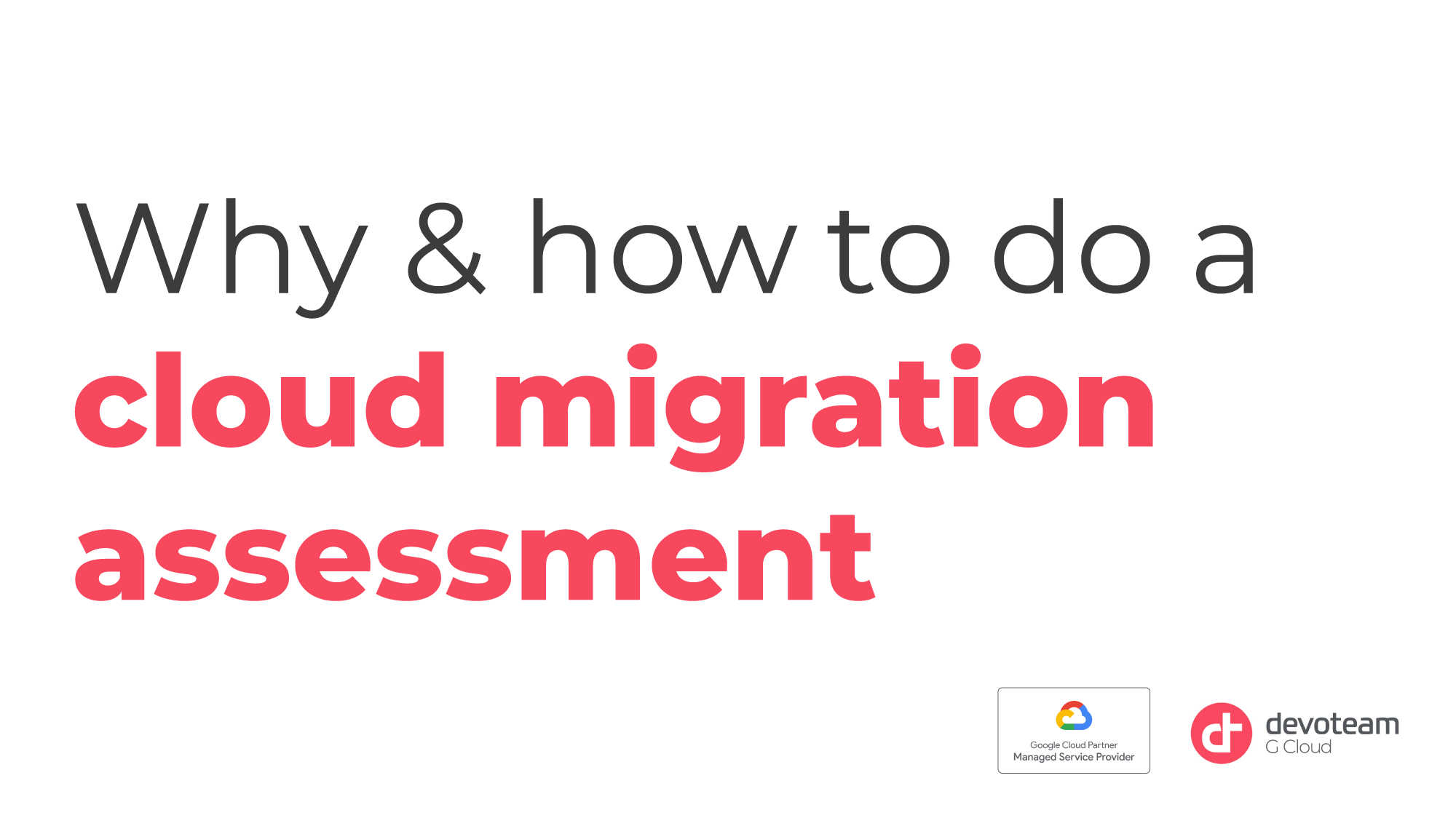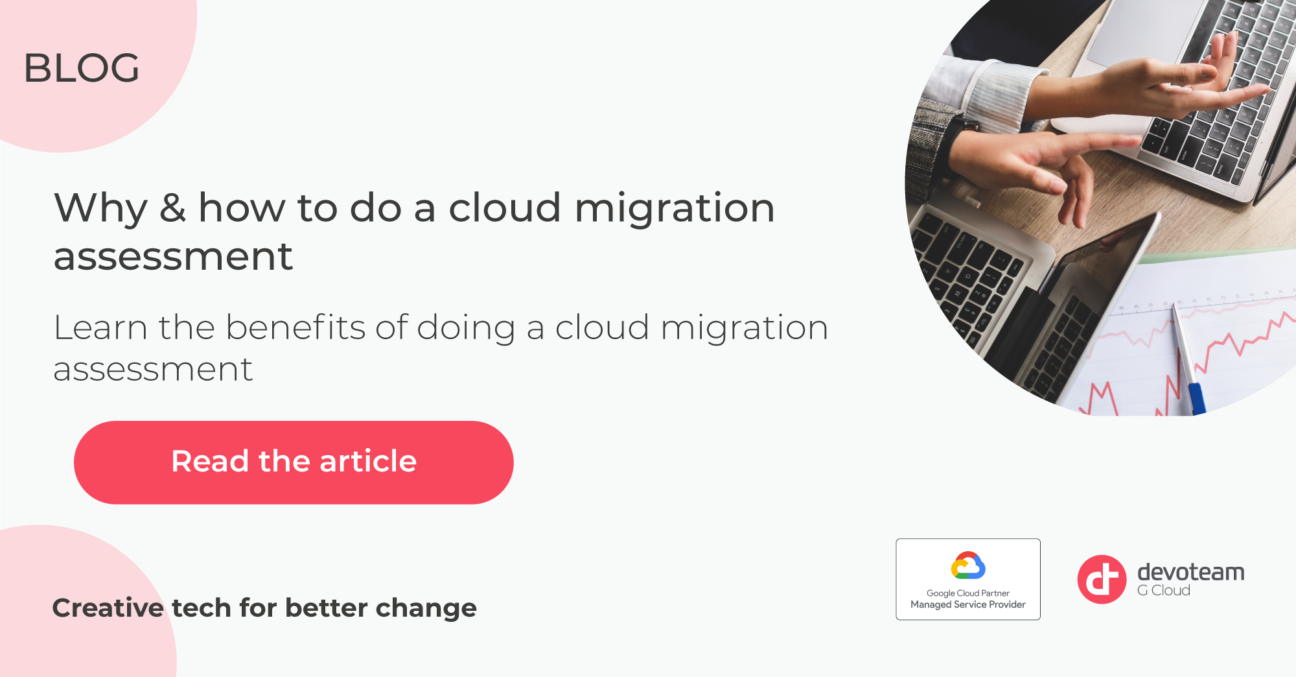If you are thinking about migrating to the cloud, it is necessary that you first do an assessment. In other words, you should examine the resources of your company and its IT environment. It is a project in its own right that requires the investment of your teams.
This article will teach you why & how you should do a cloud migration assessment before migrating to the cloud, as well as its benefits.

Article written by Christophe Prévoteau, pre-sales engineer at Devoteam G Cloud
What is a cloud migration assessment?
The Cloud Readiness Assessment is a step in which your company examines its resources and IT environment to determine if it is capable of migrating to the cloud. It consists of carrying out an evaluation in order to make the migration process easier, and put in place a cloud environment that follows the best practices.
Let’s see what are the steps to take to do a cloud migration assessment.
How do you do a cloud migration assessment?
First, you must answer the right questions, for example:
- Why do you want to move to the cloud?
- What are your objectives?
- What’s your goal in terms of ROI?
- Do you have an ageing infrastructure?
- Is your team overloaded with tasks that bring no value?
- Do you want more agility and flexibility?
Once these questions are answered, you should think about the practical ways to start the migration. Ask yourself:
- How are you going to move to the cloud?
- Are you going to do it with your own resources?
- Do you need to bring in a third party to help?
Once this is done, you can think of the rest of the cloud migration assessment in a few simple steps :
- Identifying the application scope eligible for migration
- You have to define which applications, workloads and data are transferable to the cloud
- For the workloads going to the cloud, decide which Cloud Service they best fit with. Consider Managed Services for storage, databases, network functionality and more.
- Understand dependencies between your workloads, which will later help you identify migration waves.
- Identify key Stakeholders per workload as to collaborate on a migration window, success and rollback criteria.
- Evaluating the available internal resources
- Do your teams have the right skills?
- Do your teams have the time to focus on the migration?
- Are there conflicting priorities?
- What are your weak points and how can you train your team accordingly?
- Run Discovery workshops
- Run separate workshops with dedicated teams regarding Networking, Security, Governance, Operations and more.
- Design the to-be state of your Google Cloud environment
- Determining the plan & budget
- It’s important to establish a plan as it allows you to track progress.
- Establishing the profitability goal is crucial, which includes TCO calculations, the amount of days needed, licensing costs and training, to name a few.
- Build the Cloud Foundations
- Before considering migrating a single workload, ensure your cloud foundations are built, in line with the design and outcome of the discovery workshops.
A clear aim will make your cloud adoption easier. For example, creating a roadmap regarding the future and priorities reduces the time and financial investment needed for the migration.
What are the benefits of doing a cloud migration assessment?
Everyone is taking an interest in the cloud, so an awareness of the potential and benefits of the cloud is important. But you might wonder:
- What are the benefits of moving to the cloud?
- Isn’t it something I can do on premise?
- If I do the same thing, it will cost me less on my on-premise
- The cloud is expensive
- How much will this change cost our company?
You need to understand which migration strategy is best suited for your business, the cost/benefit relationship, as well as the approach and time. The only way to achieve this is to carry out an assessment of your existing situation. This will remove all the questions cited above.
Here are some benefits of doing a cloud migration assessment:
- It provides a detailed analysis of your existing infrastructure as well as a comparative study in relation to the best practices of a cloud platform
- It gives you a high-level financial analysis to define the value of the cloud.
- You get an overview of the applications for which the cloud is most relevant.
- It provides the tools and the framework to develop hypotheses for perimeter migration.
- It identifies and corrects problems during the study phase, before they become real.
- It offers recommendations in order to standardise and optimise the use of your park.
How to do an assessment simply?
Embarking on a cloud strategy is a demanding process, based on learning and method.
A suitable partner is one that uses the cloud perspective to help you take a realistic view of this type of project and refocus you and your teams on your core business.
At Devoteam G Cloud, as an awarded Google Cloud Managed Services partner, we have all the necessary skills and experience to assist you in your cloud adoption project and your cloud migration assessment.
Based on our experiences with customers, we’ve been able to standardise an approach to support you at every stage of defining your cloud strategy.
Our assistance consists of 4 main stages:
- Assessment: a study of your infrastructure
- Plan & prepare: creating the migration strategy
- Migrate: preparing the landing zone, carrying out the migration
- Operations & optimisation: training and assistance with the operation of the platform
We believe that defining your cloud strategy is an essential stage, but it isn’t the first stage of your transformation. First, a cloud migration assessment should be made.
Consider reading some of our success stories to find out more about our expertise and methods of working with customers in all industries and of all sizes. If you’d like to know more about cloud migration assessments, get in touch with us.
